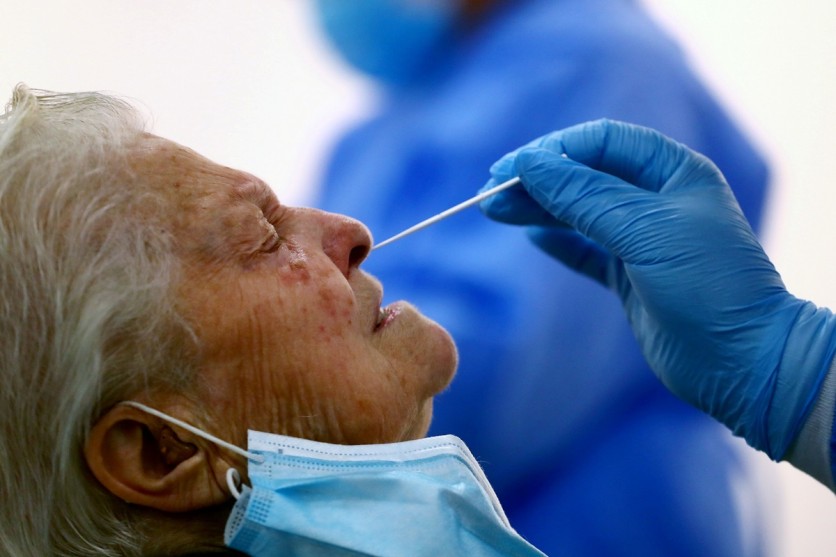Brain fluid started leaking from a woman's nose after she was swabbed for COVID-19 testing as the extra-long Q-tips caused 'trauma' to pre-existing defect in the woman's skull.
The University of Iowa reported on Thursday, October 1, that the swab had caused 'trauma' to an opening in the woman's skull, which led to cerebrospinal fluid, a protective liquid surrounding the brain and spinal cord, to drip from her nose shortly after getting the COVID-19 testing.

What is Cerebrospinal Fluid (CSF) Leak?
Cerebrospinal fluid (CSF) is a clear fluid surrounds the brain and spinal cord and cushions them from injury. It is continuously produced in ventricles and absorbed by the bloodstream to deliver nutrients to the brain. It also serves as a neuro-waste removal system.
A CSF leak occurs when the fluid escapes through a small opening or fracture in the outermost layer of connective tissue that surrounds the brain and spinal cord. A CSF leak can occur in the brain or at any part of the spinal column.
Meanwhile, if the brain loses CSF, it will sag inside the skull and cause headache. It also causes intracranial hypotension, which is a lowering of pressure in the skull.
While anyone may suffer from CSF leak, it is very rare that only five out of 100,000 may experience it. Obese people and those with high blood pressure and some connective tissue disorders such as Ehlers-Danlos and Marfan syndromes are more prone to CSF leak. It is usually regarded as sinusitis, migraines, or other headache disorders.
Meanwhile, women have higher risks of getting into this condition than men, particularly among those aged between 30s and 40s.
Read also: Over 4,000 New York Children Lost Their Parents from COVID-19: Leaving Up to 25% in Foster Care, Report Says
The Iowa woman who had brain fluid leaks after swab test
In July, the woman in her 40s was scheduled for surgery to repair a hernia, but since hospitals require COVID-19 testing before surgeries to protect doctors and nurses from coronavirus.
Clinicians inserted extra-long Q-tips up into her nose as she underwent nasopharyngeal swab test. The Q-tip went as far as upper nostrils where throat is connected to the nasal passageway where there are layers of muscle and connective tissue surrounding the skull bone.
The woman who was not named in the report started to have runny nose after the test. She then began to feel extreme headache as her nose continuously dripped fluid. She then became nauseous and began vomiting.
She visited her doctors as she tasted metal while her neck and head got stiff. Soon doctors took CT scans of her skull as well as images of her nasopharyngeal passageway.
Scans later revealed an opening at the base of her skull where she has been swabbed. It was the first time doctors find a potentially dangerous leak caused by a coronavirus test swab. "This is the first report of an iatrogenic CSF leak after a nasal swab for COVID-19," doctors wrote in the case report.
However, the case report said that the swab alone did not cause the leak as doctors found an undiagnosed defect on the woman's skull. However, the swab caused the small opening to become wider, allowing the fluid to seep out of her brain.
Earlier scans taken in 2017 showed that the defect already exists in the woman's head since then, so the fluid leak only occurred after the swab worsened the fracture.
COVID-19 update: 20% of coronavirus deaths are from the US
Since the coronavirus outbreak began by the end of in December 2019, more than 34.2 million have tested positive for COVID-19, in which 7.2 million was recorded from the United States. The U.S. also had more than 208,000 COVID-19-related deaths, which is about 20% of the global death rate.
Currently, COVID-19 tests are performed in three ways: through saliva collected in a test tube, swab test in lower nostril, and by nasopharyngeal swab.
In February, more than 7 million out of nearly 104 million Americans tested for coronavirus have tested positive. This was when the Centers for Disease Control and Prevention (CDC) shipped out its first batch of COVID-19 tests. However, less than 5% among these people received false positives results.
Since test kits were scarce then, New York officials decided that only people showing symptoms or a definitive exposure to the virus will be tested for COVID-19. Aside from preserving kits, this would also prevent people from getting infected at hospitals and testing sites.
According to the CDC, a person can acquire the virus by getting close with an infected individual and inhaling the virus as well as by touching a contaminated surface and touching the mouth, eyes, nose or face.
Read also: COVID-19 Vaccine by Moderna Showed Good Results When Tested Amongst Ages 56 to 70 But 'Severe' Side Effects Reported
This is owned by Tech Times
Written by CJ Robles
![Apple Watch Series 10 [GPS 42mm]](https://d.techtimes.com/en/full/453899/apple-watch-series-10-gps-42mm.jpg?w=184&h=103&f=9fb3c2ea2db928c663d1d2eadbcb3e52)



